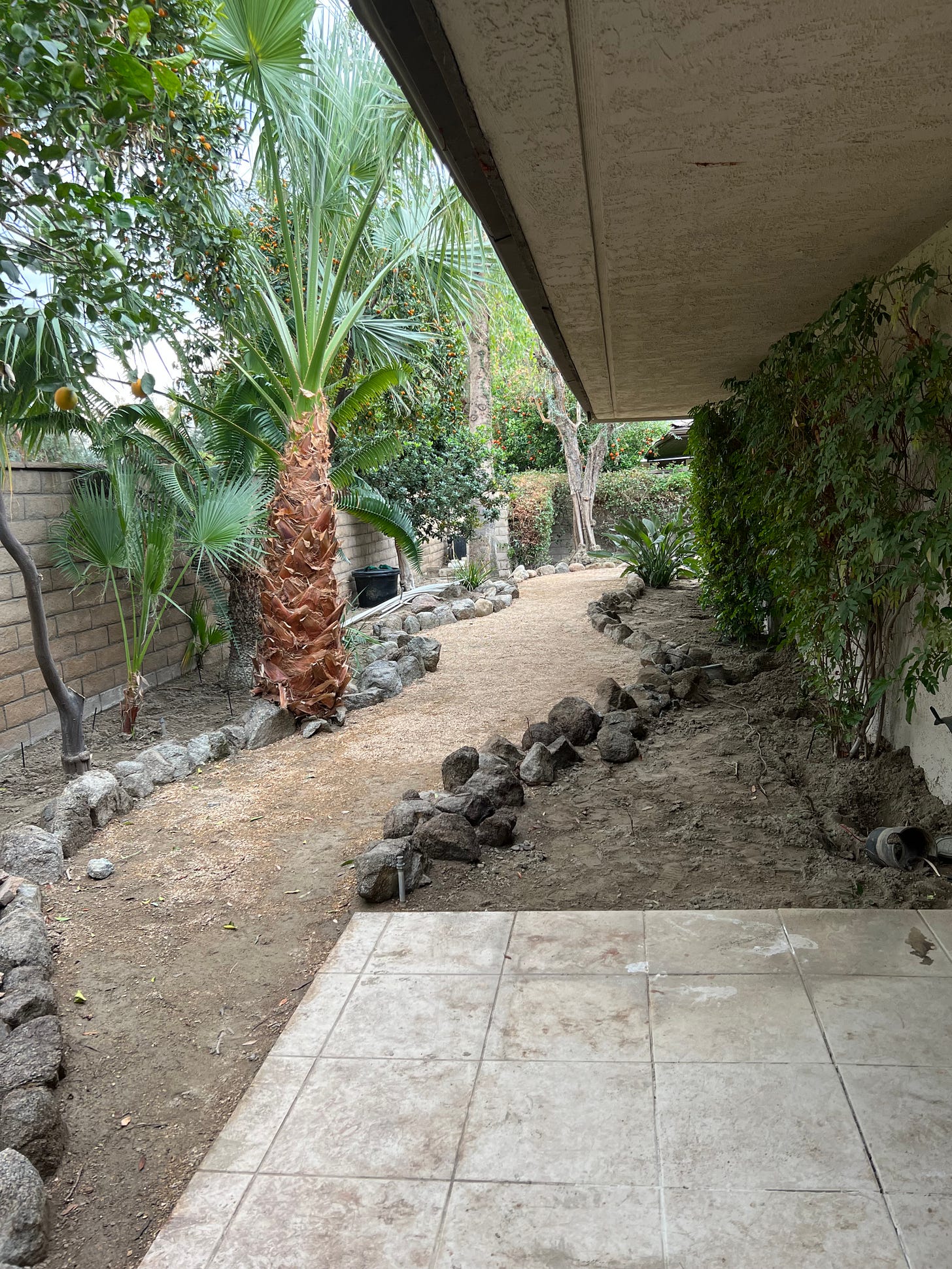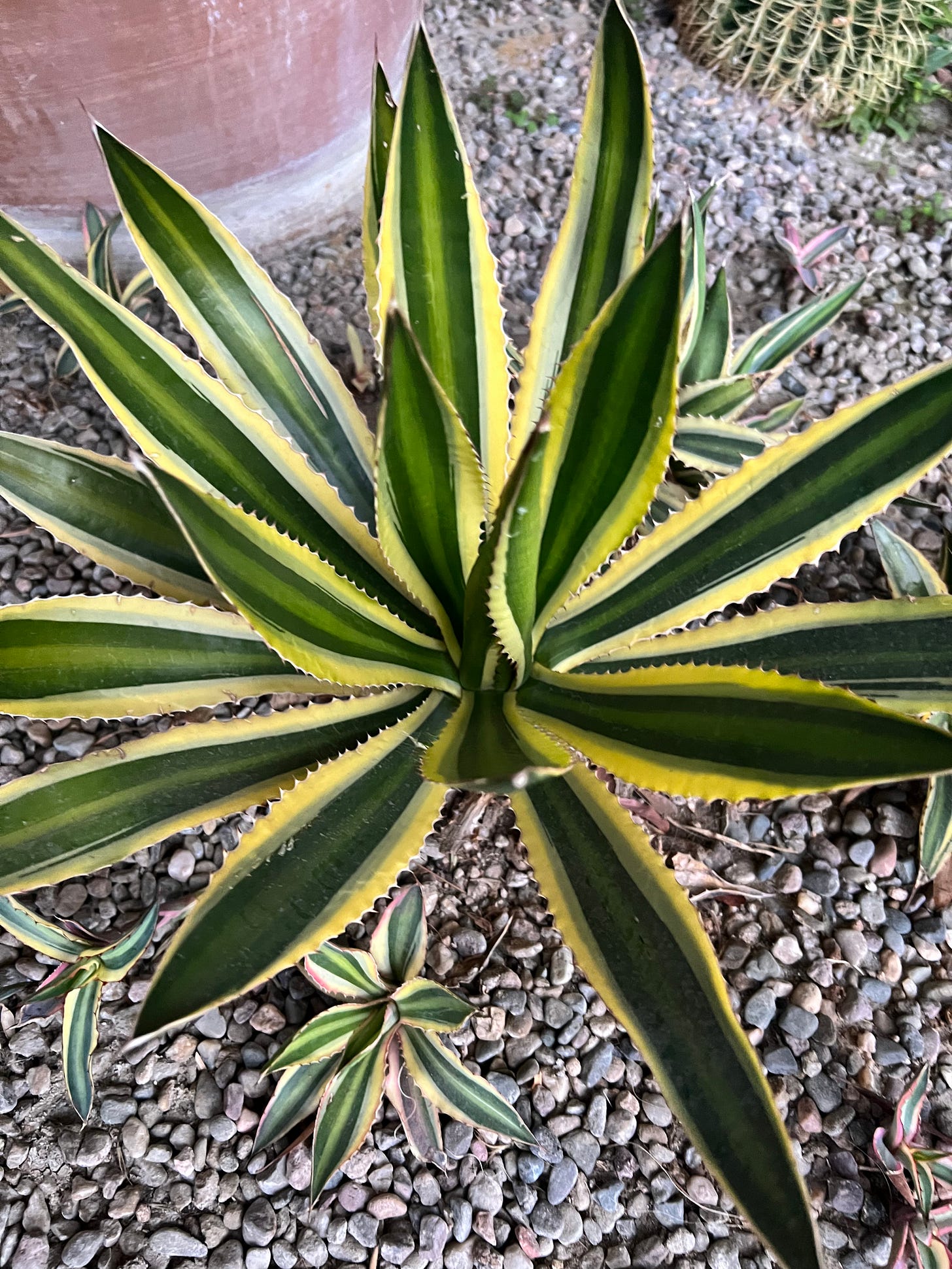No matter where I rest my head, West Coast or East, I spend an inordinate amount of time fretting about water.
In the East, I mostly worry about having too much of it. When we experience epic storms in spring and summer—which have become at least semi-annual occurrences as a result of climate change—water rushes through the wet meadow into the small pond at such a rate that at times the pond has overflowed its banks. Fearing that the force of water would breach the earthen dam there one day, we commissioned a spillway, which now gushes like a waterfall several times a year, though it can sit dry for many months in between.
During the biggest storms, the large volume of runoff feeding the stream has also swamped the pipe under our stone bridge. The last thing you want is water running around bridge supports, where it can undermine the whole structure, so we installed a relief pipe several years ago. One reason we have pressed to reforest the east woods is to slow down surface water, but given the fact that most water moving through Puddock Hill does not originate on our property, there’s only so much we can do.
A generation ago, builders razed a forest above us for houses. One can hardly underestimate the impact of this kind of change to the landscape. In a North Carolina Watershed study cited by Penn State Extension, “the mean soil infiltration rate went from 12.4 in/hr to 4.4 in/hr when a site was converted from forest (duff layer on soils) to suburban turf.” In other words, removing the forest in that case reduced the infiltration rate by two-thirds—shedding much more runoff to neighbors.
So the removal of that forest above us no doubt led to more water leaving nearby land than would have occurred naturally. But, in addition to that, storm water regulations at the time did not anticipate the increased volume brought about by climate change. The result, in addition to the problems just noted, has been gouging out of the stream bed and, in places, erosion of the stream bank.
As a consequence, when big storms hit Puddock Hill I worry about whether my efforts to mitigate the impacts of this water will hold. They don’t always. Degradation of the stream bank continues—as will our efforts to mitigate the situation.
Meanwhile, the desert on the other side of the continent can also suffer too much water. During the occasional summer monsoon in the Coachella Valley, flooding may occur, especially in low-lying areas or along water courses such as the Whitewater River and its tributaries.
For most of the year—and sometimes for years on end—the name Whitewater seems like a joke to the uninitiated. The river can go months appearing to be no more than a wide swath of sand. While “Whitewater” refers to the silicate and lime sediment that gave the water a milky appearance to early Spanish settlers, not to whitecaps, when the monsoon comes the river flows in torrents.
Most of the time, however, the main problem is too little water in the American Southwest, not too much.
The “rain shadow” cast by nearby Mounts San Jacinto and San Gorgonio creates the desert of the Coachella Valley. Usually, the prevailing wind crashes low-lying clouds into those mountains, where they lose moisture before nearing the valley floor. When those winds briefly shift in summer, however, monsoons can result. More unusually, earlier this month remnants of the atmospheric river that drenched other parts of California made an appearance in the valley, intermittently delivering several days of rain (snow atop the mountains) but nothing that our storm water infrastructure couldn’t handle.
As a result of this system, some relief arrived for long-term drought in the state, but we must keep this in perspective. While no place in California was experiencing Exceptional Drought or Extreme Drought as of last week, conditions still run between Abnormally Dry in a few places to Moderate Drought or Severe Drought in others. Only a tiny area in the state’s northwest has escaped drought at this time.
In addition to its very occasional rainfall (5 inches in a normal year, always unevenly distributed), our garden, as well as our tap, relies on water pulled from an ancient, depleting aquifer or channeled from Lake Mead via the All-American and Coachella Valley Canals. Unfortunately, the recent California rains had no impact at all on Lake Mead, which receives water from the Colorado River and its tributaries. In fact, that overdrawn reservoir remains at critically low levels—just 28 percent of average for this time of year.
So I worry.
How do I make this worry productive as a backyard steward? In the long run I plan to convert the garden mostly to native desert plantings, but it will take a while to get there. More immediately, we removed some exotic water-hungry shrubs that were not doing their job esthetically anyway. I should have taken before and after photos but didn’t. The open earth to the right of the path in this picture shows the site of shrub removal:
Just above the patio, the picture also shows an old-fashioned spray head awaiting removal. Our first big landscape project has been to replace the irrigation system with drip heads, as the old-fashioned spray heads waste water by the gallon.
Will this make a difference? It would if everyone did it. Southwest lawns and gardens account for nearly 80 percent of residential water usage, and despite reforms landscapes still consume far too much water. Even in the desert, no one needs to cut their showers short if we use water more responsibly outside the house by introducing less thirsty native plants and watering more judiciously.
On the West Coast, I’ll be on a mission to win converts to desert backyard stewardship for a long time to come. On the East, I’ll continue fighting practices that feed the deluge. One drip at a time.
This Century Plant (Agave americana ‘Marginata’) grows by our front door. It is native to Texas and Mexico, but at least comes from the right neighborhood, unlike too many plants now in the yard.




